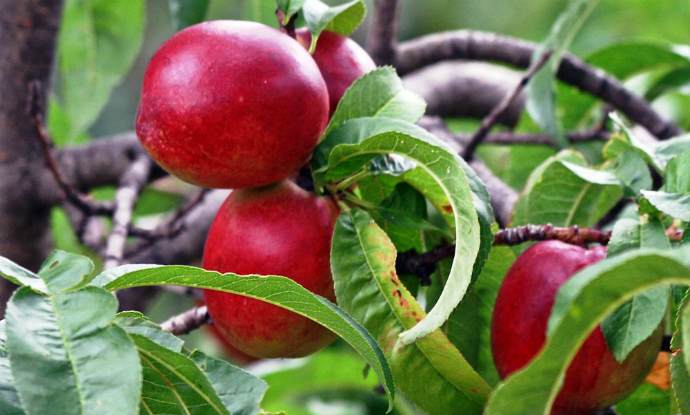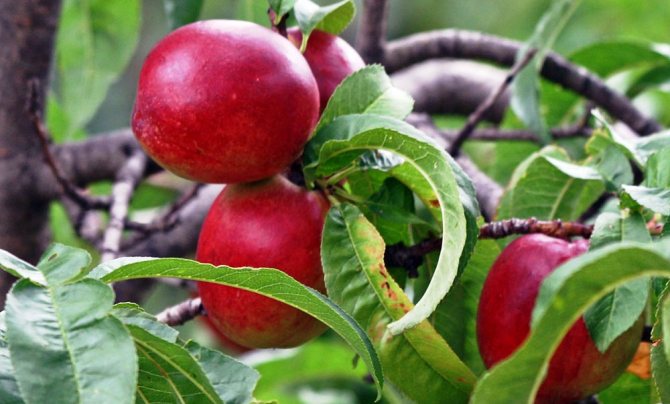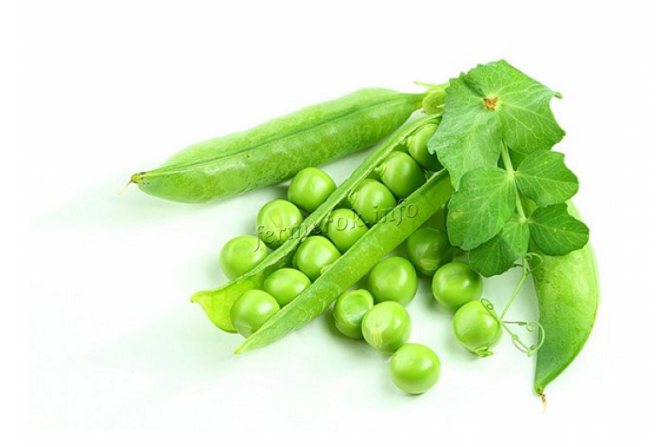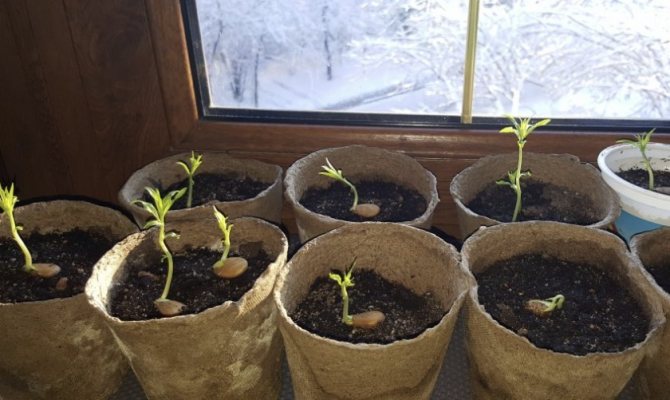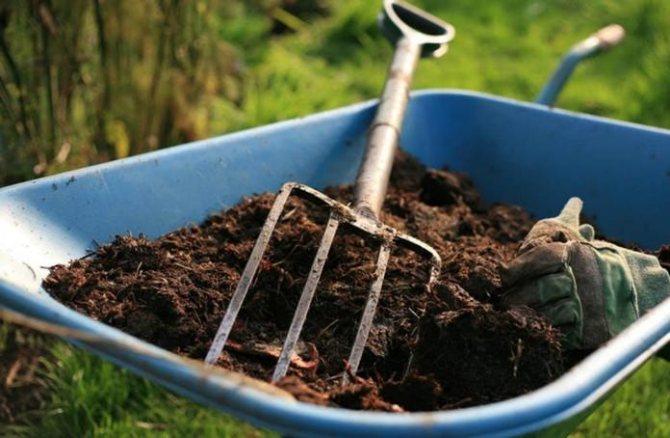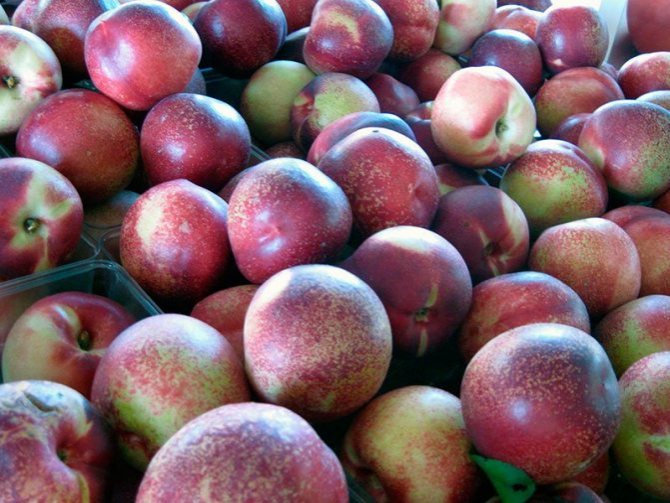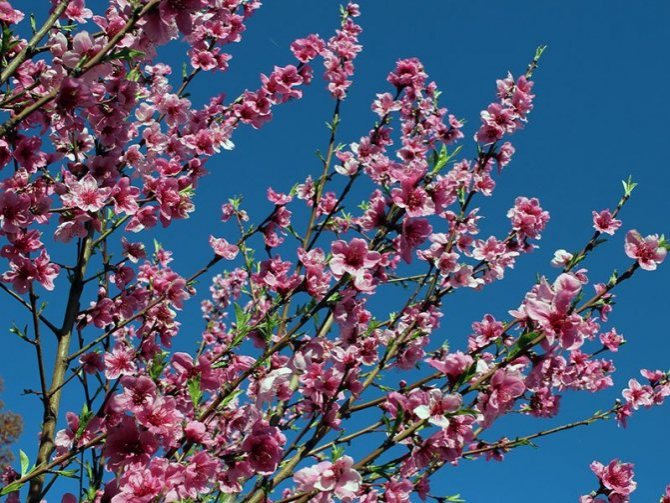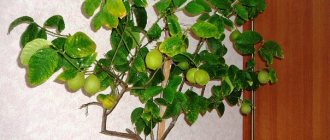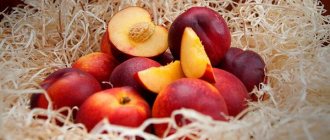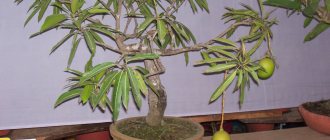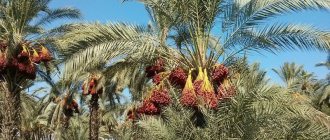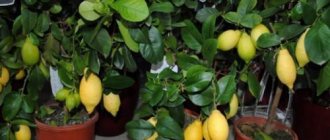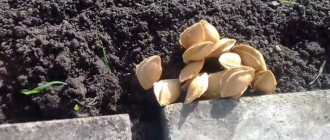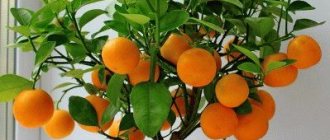Nectarine is also called the holofruit peach, its origin still provokes controversy among breeders. There is no doubt only that it is a very tasty and healthy fruit. It got its name deservedly, because its really nectar fruits contain a large percentage of sugar - 7.89g / 100g of weight.

According to breeders, it is known that nectarine is a hybrid of a peach and something else. Opinions are divided, some scientists believe that nectarine is an interspecific hybrid that comes from crossing a peach with a Chinese plum, apricot and almond. Others are sure that the fruits of nectarine appear on peaches, which was first mentioned by the British back in 1616. There is an opinion among other scientists that on peach trees, a bud mutation occurs as a result of self-pollination, therefore, the culture cannot be an independent biological species. Let's take a closer look at what kind of fruit it is - Nectarine.
History
For the first time, they learned about the exotic fruit in 1616. An English author described in his book a certain amazing fruit, which he called "bald peach."
Scientists were interested in an unusual fruit. Through careful research, they concluded that peach nap is disappearing due to a change in the climate where they decided to grow it.
Juicy fruit, presented to the world - China. The name was formed quickly and simply, from the word "nectar", due to the predominance of sugar in the fruit.
The nectarine tree belongs to the "Pink" family and is related to almonds.
For several decades, gardeners have been growing different types of nectarine, and only having received large-fruited varieties in the 20th century, the fruit became popular and received high demand.
"Family of Pink"
The homeland of the peach tree is not reliably known, according to scientists, it is north china... A close form of the cultivated peach was found on its lands, and the fruit is also given a place of honor in Chinese mythology. In the days of the Ancient East, its juice was considered a drink of "immortality", because people who regularly consumed this fruit lived a long and healthy life.
For Renaissance artists, the peach fruit was a symbol purity and sincerity, and depicted them exclusively with a leaf at the petiole. There is an opinion that the presence of an image of a peach in the kitchen increases the chances for the owner of the house to conclude a successful love union.
Nectarine - a subspecies of peach, arose as a result of a natural mutation process due to self-pollination. The fruit gained its popularity only at the end of the twentieth century, after the appearance of a variety with large fruits (up to 200 g) and yellow flesh.
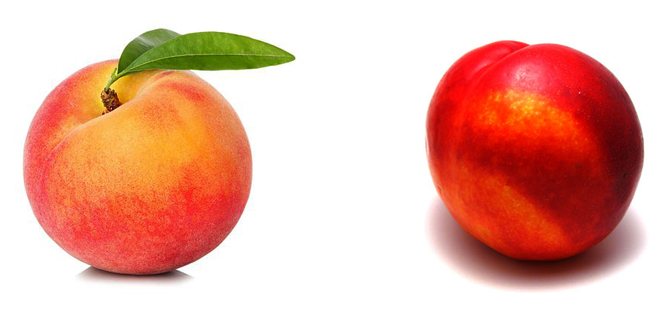

Description
The nectarine tree reaches a height of 4 to 8 meters and begins to bloom even before the leaves appear. Ripening occurs in the warm season and lasts for 3-5 months.
When ripe, the fruit turns into several colors: red, yellow, orange, burgundy. The fruit may be presented in one shade, or combine several at once.
Nectarine is grown in Greece, Tunisia, Italy, Cyprus, Moldova and even in Russia (Crimea and Volgograd region). The fruit is immune to diseases and pests, and is quite frost-resistant.
The orchard is not durable. Maximum, the tree lives up to 20 years, and under unfavorable conditions up to 10.
The fruit tastes: sweet, juicy, has a pleasant bitterness and almond aroma.
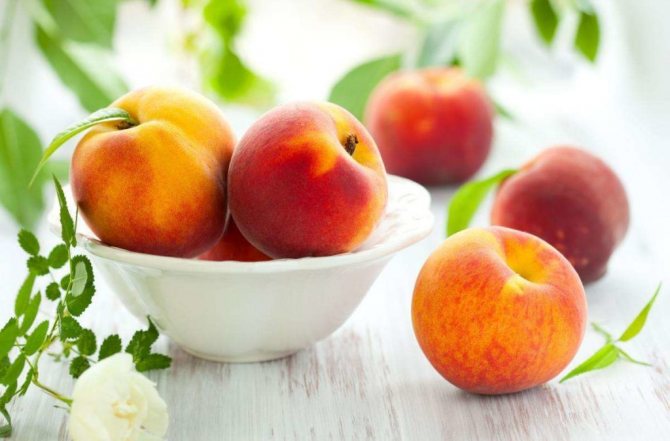

Chemical composition of nectarine:
- pectin substances,
- organic acids,
- alimentary fiber,
- vitamins B, A, E, K, H, PP, C,
- mineral compounds.
Despite its high sugar content, the fruit is considered to be low in calories. There are 48 calories per 100 grams of nectarine.
- Carbohydrates - 11.8 g:
- Proteins - 0.9 g;
- Fat - 0.2 g.
Varieties of nectarines By the 21st century, gardeners have developed several dozen varieties. Most of them bear large fruits, have a longer shelf life and do not require careful maintenance.
Popular varieties that adapt even to cold climates:
- Stark ed
- Crimson Gold
- Nectarine 4
- Crimean
- Harko
- Wang
Culture care
To get a high yield and observe the beautiful flowering of nectarine, it is necessary to properly care for the tree.
Irrigation
The first watering is carried out at planting, about 5-6 buckets of water are spent. The next time the nectarine is watered during bud formation, then during flowering and fruit ovary. During this period, the amount of liquid is increased to 70 liters. Then take a break until the fruit has formed a bone. If this is not done, then the fruits will crack, their quality and appearance will decrease.
See also
Peach care rules and agricultural techniques, pest control
To read
Fertilization
Feeding nectarine is carried out 2-3 times per season. The most optimal composition for him is:
- water extract of superphosphate 150 g;
- ammonium sulfate 80 g;
- potassium chloride 60 g;
- borax 10 g;
- manganese 15 g
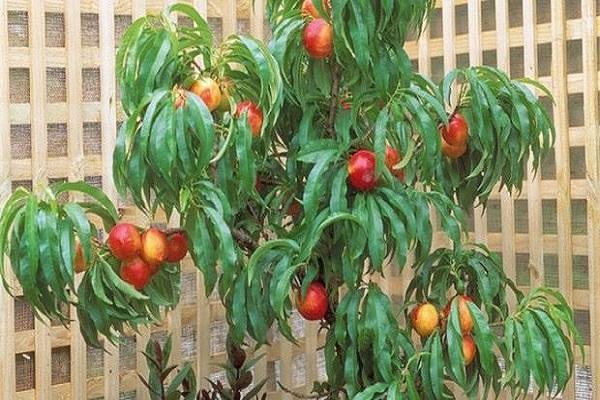

The list shows the maximum values for the application of the substance. The number of components may differ by 10-20 g. All components are mixed and sprayed on the sheet. This type of fertilization is called foliar fertilization. Substances penetrate into plants through the stomata of leaves, and have a faster effect.
It is also important to process the nectarine near-stem circle with urea. This will not only enrich the tree with useful minerals, but also get rid of pests that hibernate in the roots and under the bark.
Important! If buds have formed on the tree, then urea is added in the fall, after the leaves have fallen off.
Organic fertilizers are fed to the plant once every 2 years. When using manure or humus for mulch, organic matter is not fertilized. Nectarine has enough nutrients from the mulch.
The first processing on the leaf is carried out before the onset of bud formation, the second during flowering, and the third during the period of fruit formation. Superphosphate and humus, laid when planting a seedling, will be enough to recharge for 5-6 years.
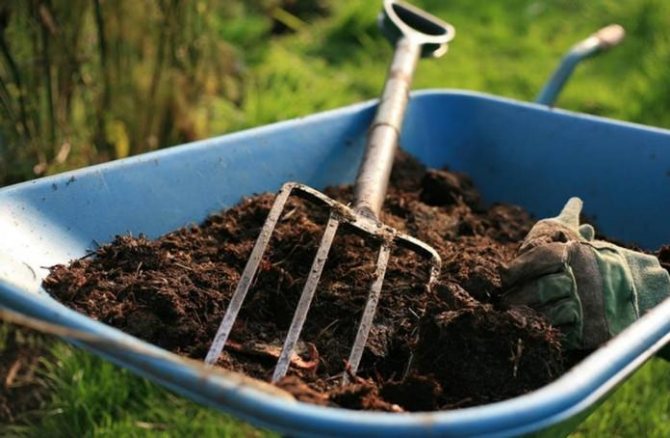

Treatment against diseases and pests
In order for the nectarine to bear fruit well and always remain healthy, preventive treatments for fungal diseases and pests are carried out every season. The following drugs are used for this purpose:
- urea;
- "Kolikarbatsin";
- "Kuprozan";
- "Karbofos".
Spraying is carried out several times a season. The first treatment is done before the beginning of bud formation, the second - during flowering. Next, they inspect the tree, if it is healthy, then there is no need to repeat the spraying. If signs of fungal diseases or pest attacks appear, then drugs are used again.
Important! Any chemical treatments are stopped 20 days before the start of the harvest.
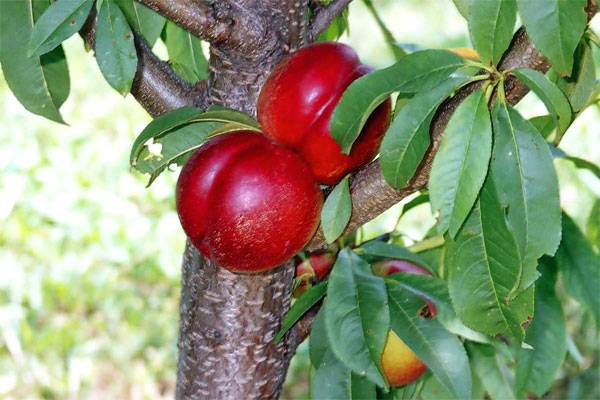

Pruning and shaping the crown
It is known that nectarine bears fruit only on annual shoots. This must be taken into account when shaping the crown and carrying out sanitary pruning. In the first 5-6 years of the growing season, gardeners are engaged in crown formation in early spring. 2 skeletal branches are chosen from an annual seedling, they are shortened by 10 cm, and the remaining branches are cut off. In other seasons, the number of skeletal branches is increased by 2-3.
The central shoot, which extends directly from the trunk, should be 20 cm higher than the rest. For the convenience of harvesting nectarine, a crown is formed in the form of a bowl. The maximum tree height should be 2.5 meters. After that, shaping trimming is not carried out.
Summer pruning is not carried out. And after harvesting, dry, damaged shoots are removed. Very thickened areas are also thinned out.
Shelter for the winter
Nectarine is characterized by high resistance to frost. However, this property is maximally manifested in the 5th year of the growing season. Until this time, it is recommended to cover the plant from winter frosts. For this, the following manipulations are carried out:
- Three tall sticks are driven in next to the seedling.
- The tree, grabbing the sticks, is covered with a breathable insulation.
- Then they tie it to the bottom of the trunk with a rope so that the structure is not blown away by the wind.


Also, the trunk circle is mulched for the winter. For this, the following materials are used:
- straw;
- sawdust;
- humus;
- manure every 2 years;
- cut grass.
Mulch is laid in dry weather. If it has recently rained, then the shelter for the winter is postponed for 1-2 days so that the soil has time to dry out. If this rule is neglected, the likelihood of rot formation in the root system increases, after which the tree will begin to die.
Important! Mulching provides not only protection from frost, but also the preservation of nutrients and moisture at the roots of the plant.


Growing nectarine
Nectarine seeds are sown in the highlands. This eliminates drafts and strong winds, which reduce the volume of the crop, and provide more light.
In the south, planting is done in the fall, in the north - in the spring.
Brick chips or a layer of gravel are used as drainage. Closer to ripening, the tree is fertilized with potash fertilizers to add sweetness to the fruit.
Water the tree as the soil dries up, and before collecting the nectarine, water the tree well, which will increase the juiciness of the fruit.
Features of planting in open ground
Each region has its own planting dates. In addition, it is necessary to observe the planting technology, as well as to prepare the site and place for nectarine in advance.
Suitable dates
Depending on the region of cultivation, the plant can be planted in autumn or spring.


In autumn
In the south, seedlings are planted in the ground in the fall. During the winter, nectarine is gaining strength, and by the beginning of spring it begins to bud and bloom. The earlier the ovary occurs, the faster the fruits will ripen.
In the spring
Spring planting is suitable for all growing regions. However, it suits the north and south the most. During the spring and summer period, a young tree manages to adapt to climatic conditions. If you plant a plant for the winter, there is a high probability that it will die.
Site preparation and planting pit
Before planting, choose a suitable site. It should be well lit. Be free from hostile neighbors, fences, fences and other structures that create permanent shade. It is cleared of weeds and stones. Then a hole is dug with a diameter of 70 by 70 cm and a depth of 70 cm. Then the excavated earth is mixed with humus in an amount of 10 kg. Superphosphate is added. The resulting mixture is filled in half the pit and left for 2 weeks.
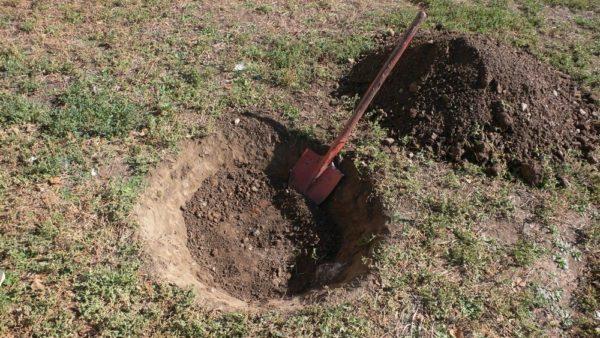

Important! When planting nectarine in the spring, the pit is prepared in the fall.
Sapling selection
Young trees are purchased from agricultural nurseries. It is better to buy nectarine one year old, during this period the plant shows the greatest survival rate. On the trunk and branches of the seedling there should be no mechanical damage, black spots, rot on the roots.
Sapling planting technology
Nectarine is transferred into the soil according to a specific algorithm:
- A stick 1.5 meters long is driven into the hole to protect the seedling from adverse conditions.
- A young plant is placed in a hole.
- Roots are gently spread.
- The tree is sprinkled with earth in layers, compacting each time. This is done to prevent the formation of voids under the ground near the roots, which facilitate the penetration of infection.
- Nectarine is poured over 50-60 liters of water.
- They sprinkle with dry earth to a trunk height of 20 cm.
- Tie the seedling to a stick.
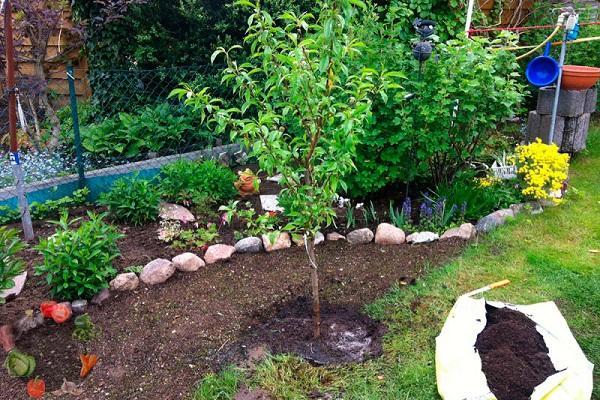

Beneficial features
Nectarine contains many vitamins and surpasses even peach in usefulness. The fruit helps in the work of internal organs and the body as a whole.
- Vitamin C and ascorbic acid strengthens the immune system
- Fiber helps with the work of the stomach by absorbing toxins and removing waste products
- Iron increases hemoglobin levels
- Potassium contributes to the normal functioning of the cardiovascular system
- Phosphorus has a beneficial effect on kidney function, strengthens bones
- Pectin fights cholesterol
- Manganese helps improve metabolism in the body, lowers blood sugar
- Zinc develops immunity against allergies, the appearance of early wrinkles
- Beta Carotene Reduces Cancer Risk
- Copper improves blood circulation
In addition to vitamins, nectarine has a number of positive qualities:
- The fruit maintains the right amount of water in the body
- Nectarine has a laxative effect that helps relieve constipation
- Helps to lose weight
- Suitable for children from 6 months
- Improves mood by strengthening the nervous system and fighting depression
- Face masks made of nectarine pulp, nourish and moisturize the skin well
- Nectarine can be combined with a variety of foods to create delicious and interesting dishes
- The nectarine tree is great for making souvenirs
- Bitter oil, used in medicine, making medicines and ointments from it
Harmful properties
Despite its many beneficial properties, nectarine also has harmful properties.
When consumed excessively (no more than 4 pieces per day), the fruit can cause:
- Bloating
- Bowel disorders
- Increases in blood sugar
- Allergies
Contraindications:
- Children under 6 months
- People with diabetes
- Allergy sufferers
- For nursing mothers
- With stomach ulcers
- It is forbidden to consume the bone of nectarine, because it possesses poisonous hydrocyanic acid.
It is not recommended to consume nectarine at night. A large amount of water in the fruit can cause frequent urination.
Tree propagation methods
Nectarine is propagated in three ways:
- cuttings;
- seeds;
- vaccination.
Each process has its own characteristics and certain techniques that must be followed in order to achieve a good result.
Seeds
This is one of the easiest ways to propagate nectarine. However, not all seeds germinate. After harvesting, the strongest and largest fruits are selected. Leave them to ripen. When the skin becomes thin, the bones are removed. Next, the following procedures are carried out:
- The drupes are soaked in warm water for 2-3 days, this will help the seeds germinate.
- The liquid temperature should be 50-60 ° C.
- The water is changed 2 times a day, in the morning and at night.
- Then the seed is removed and dried for 3 days.
- Seeds are removed from the seed.
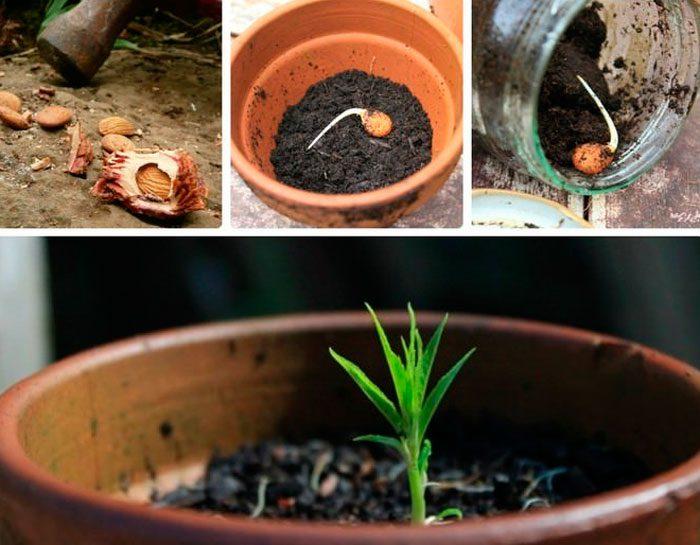

The landing procedure has its own characteristics. First you need to choose a suitable area with good lighting and suitable soil. Next, the following manipulations are carried out:
- Dig a trench 1 m long and 25 cm deep.
- Fill it half with humus.
- Sprinkle with water, leave for 1 hour to absorb.
- Place the seeds in the groove with an interval of 30 cm.
- Buried with earth.
- Top of the planting is covered with any mulch.
- After 2-3 days, watered with a solution of humus.
Important! Seed planting is carried out at any time: in spring, autumn or summer. During the winter period, grains with poor germination will die, the strongest will remain.
Cuttings
After pruning, branches remain that can be used to multiply nectarine. They should not be thicker than 10 mm. Each cutting is shortened to 15 cm. Shoots can be planted in spring or autumn. For this:
- Young shoots are treated with Kornevin solution to accelerate root formation.
- Then they are planted in a suitable area in the ground.
- Cover with a transparent container, creating a mini greenhouse.
- Leave the seedlings for 2-3 weeks.
- Check for roots.
- If the growth of roots has begun, then they continue to grow plants.
- When the bottom of the cutting is blackened, it is removed.
See also
Terms and rules for pruning peach, formation scheme after harvesting
To read


Graft
This is a fast way of multiplying nectarine, which is most often successful. The graft is produced on peach or almond by budding method. For this, certain rules and conditions are observed:
- The thickness of the rootstock cutting should be more than 8 mm in diameter.
- The bark at the site of the scion near the mother tree is thin, smooth, elastic.
- The procedure is carried out during the period of active movement of the juice along the trunk.
- Use only well-sharpened and sterile instruments.
Vaccination of nectarine is carried out according to a specific algorithm:
- Cuttings are harvested in the morning, their length should be at least 25 cm.
- Cut off side shoots and leaves.
- Dip them into the water.
- The twigs are wiped with a damp cloth to remove dust and dirt.
- A 12 mm long cross section is made on the handle.
- Then this incision is made over the kidney.
- With a smooth movement, the bark is cut from one notch to another.
- A 2.5 cm cut is made on the mother tree, taking care not to damage the bark and trunk of the tree.
- Then the cutting is applied to the tree, closing them with bare areas.
- Next, the attached flap is wrapped with plastic wrap.
- Leave for 2 weeks.
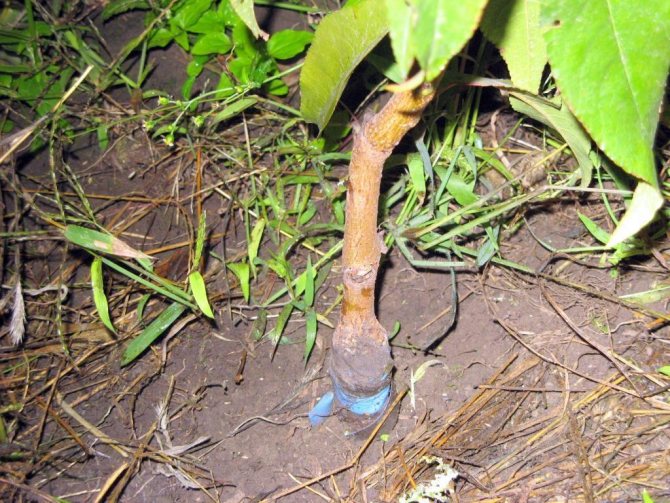

Important! After the scion has passed, the stalk should fall off with a light touch. This indicates the success of the procedure.
When and where to buy nectarine
Like the peach, the nectarine season is from August to September. The fruit should be examined carefully before purchasing. The fruit should be: bright, ripe, not very hard, without dents.
It is recommended to buy nectarine on the market. As a rule, merchants take orders in small batches, which helps to preserve the freshness of the fruit.
In the store, the order is made in large quantities. These are varieties of nectarines that are stored longer, over time they acquire a greenish tint and are inferior in taste to market ones.
The best varieties
Arctic snow. The fruits are large, yellow-orange with a broad red blush over most of the fruit surface and with white flesh. Differs in good taste and high yield.
August red. The fruits are large, oval or round, with an extensive red (it can occupy up to 70% of the surface) blush on a yellow background, the flesh is yellow. Fruit shape from oval to round. The variety has a very good taste and strong aroma, by which the fruits of this variety are easy to recognize.
May diamond. Fruits are large, globular or broadly oval, become dark red even before full ripening, mature color - red-violet. The taste of the variety is assessed as excellent.
Red diamond. Fruits are elongated, most of the surface is red with yellow spots, the stone is well separated from the pulp. The taste is excellent.
Ruby diamond. Fruits are round, medium in size and larger, shiny, fiery red, very dense. The taste is excellent. The transportability is very good.
Summer grand. The fruits are large, orange-red. The bone is easily separated from the pulp. The taste is excellent. The transportability is very good.
Summer diamond. It differs from the previous variety in even more intense color and flavor nuances.
Flamekist. The fruits are round, with red-yellow spots on a greenish-yellow background, the flesh is red-yellow, darker around the stone. The bone is poorly separated from the pulp. The taste is very good. The disadvantage of the variety is insufficient keeping quality.

